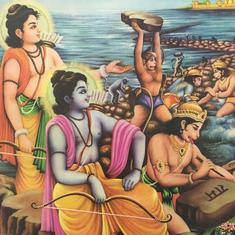If you fondly remember skits and special assemblies from Children’s Day, here’s an interesting account from 49 years ago which would put your school function in the shade. On November 14, 1956, The Times of India reported the following event: “Nearly 100,000 children assembled at the National Stadium today to participate in a Children’s Day rally, which coincided with the Prime Minster’s 67th birthday celebrations.”
Along with the children, also present were the prime minsters of Burma, Sri Lanka and Indonesia, as were Union Minsters and Congress party functionaries. Prime Minster Nehru “went around in an open jeep bedecked with flowers to enable the children sitting tier upon tier in the arena to have a close view of their beloved ‘uncle’”. The jeep yatra was followed by a march past. Nehru was then treated to an hour-long PT display followed by “musical PT by 500 girls of Lady Irwin School”.
The beginning
The idea of Children’s Day in India seems to have started in 1951 with a non-government organisation called the Indian Council for Child Welfare designating Nehru’s birthday as a day to raise funds for child welfare. The ICCW was closely, if informally, associated with the Congress. Amrit Kaur, a member of Nehru’s first cabinet and Indira Gandhi have both been presidents of the organisation. However, as is quite clear by the musical PT at the National Stadium, very soon, the concept had been picked up by the government and was being used as a marketing tactic to sell Nehru to the people of India.
Ironically then, one of middle-class India’s most cherished traditions, Children’s Day, it seems, was a statist celebration promoted by Nehru himself. The next year, in 1957, Nehru’s government released stamps to mark the prime minister’s birthday as Children’s Day. In 1960, in Mumbai, the Maharashtra government itself organised the Children’s Day celebration and TR Naravane, Maharashtra’s Social Welfare minister advised India’s children to “emulate Mr Nehru”.
Bhakti in politics
India might be the word’s largest democracy but we do treat our politicians with a little more reverence that should be required. As BR Ambedkar, the architect of the Constitution, once said, “In India, bhakti or what may be called the path of devotion or hero-worship, plays a part in its politics unequalled in magnitude by the part it plays in the politics of any other country in the world.”
While the fact that Children’s Day was instituted by Nehru’s government to celebrate his own birthday is a bit cringe worthy, this isn’t limited to any one person or party – this sort of hero worship cuts across lines. Narendra Modi’s 2015 Teacher’s Day interaction with kids and his regular radio broadcasts demonstrates that despite their ideological disagreements, when it comes to using children as a marketing tactic, Modi has simply taken a page out of Nehru’s book.
Of course, Children’s Day today has lost most of its association with Nehru. Even so, its history is a good day to remember how we as Indians easily give in to bhakti in politics. If anything, it’s an extremely relevant lesson for the adults of India.
How Nehru’s own government elevated his birthday into 'Children’s Day'
And what lessons it teaches us.










